Composition Of Household Rubbish In The United Kingdom – IELTS Writing Task 1
5 min read
Updated On
-
Copy link
Read expert Band 7, 8, and 9 sample answers for the IELTS Writing Task 1 pie chart on “Composition of Household Rubbish in the United Kingdom”. Includes vocabulary tips and scoring insights.
Table of Contents
- Question
- Structure Breakdown
- Composition Of Household Rubbish In The United Kingdom - Sample Answer 1
- Composition Of Household Rubbish In The United Kingdom - Sample Answer 2
- Composition Of Household Rubbish In The United Kingdom - Sample Answer 3
- Tips to Ace IELTS Writing Task 1 Pie Chart: Composition Of Household Rubbish In The United Kingdom
- Composition Of Household Rubbish In The United Kingdom - Connectors Used

Try AI Essay Checker for Instant Band Score
In the IELTS Writing Task 1 Academic, you may be presented with a visual representation, such as a pie chart titled “Composition of Household Rubbish in the United Kingdom”, and asked to write a report based on it.
An IELTS pie chart visually displays data in proportions, helping illustrate how different components contribute to a whole. To effectively describe a pie chart, carefully observe the data, identify key features and trends, and clearly explain your observations. Your score will depend on how well you understand the chart, your ability to explain the data accurately, your vocabulary range, and the grammatical quality of your writing.
Let’s now explore the pie chart “Composition of Household Rubbish in the United Kingdom” along with three expert-crafted sample answers representing IELTS Band scores 7 to 9!
Question
The pie charts below give information about the composition of household rubbish in the United Kingdom in two different years.
Summarise the information by selecting and reporting the main features, and make comparisons where relevant.
You should write at least 150 words.

Structure Breakdown
Question Type
Introduction
Overview
Main Body Paragraph 1
Main Body Paragraph 2
|
Want to boost your Writing Task 1 score? Get our Academic Book now!
Composition Of Household Rubbish In The United Kingdom - Sample Answer 1
The different components of household rubbish in the United Kingdom in 1985 and 2002 are shown in the two pie charts.
Overall, the proportions of most categories of household waste remained similar from 1985 to 2002, but the two major changes were represented by increased kitchen /organic waste and reduced paper waste.
The percentage of kitchen/organic waste jumped from 28% in 1985 to 44% in 2002, representing the greatest increase in that time. In contrast, paper waste was significantly reduced from 36% in 1985 to 16% in 2002. The proportion made up of plastic waste remained the same in both years at 7%. Similarly, the percentages of wood and textile waste remained relatively stable at 5% (wood) and 3% (textiles) in 1985 and 6% and 2% in 2002 respectively.
The miscellaneous category which appeared in the 2002 pie chart did not feature in the 1985 pie chart. Also, the category of dust and cinders, which represented 8% of household rubbish in 1985, disappeared from the 2002 breakdown.
(153 Words)
Composition Of Household Rubbish In The United Kingdom - Sample Answer 2
The pie charts show the percentages of household waste in the United Kingdom in the two different years 1985 and 2002 with eight categories representing different types of rubbish.
Overall it is evident that a fall in the percentage of most types of rubbish, while the proportion of kitchen/organic waste clearly increased over the years.
In the first pie chart, paper comprises the largest segment at 36% in 1985, followed by kitchen/organic waste at 28%. Additionally, metals and wood each accounted for 8%, while glass and plastic together make up 14%. Dust and cinders represent the smallest portion at 5%.
On the other hand, the second pie chart shows the replacement of dust and cinders with miscellaneous items in 2002. In this year, paper constituted approximately 16%, with kitchen/organic waste representing the largest amount at 44%. Furthermore, miscellaneous items account for 17%, while plastic and wood each make up to 7% and 6% respectively. Metals and glass combined amount to 8%, and textiles have the smallest proportion at 2%.
(173 Words)
Book a FREE demo to talk to our experts and boost your prep for IELTS Writing now!
Composition Of Household Rubbish In The United Kingdom - Sample Answer 3
The pie charts illustrate the composition of household rubbish in the United Kingdom in 1985 and 2002.
Overall, most components of household rubbish remained stable over the years, except for kitchen/organic waste and paper. Additionally, there were notable changes with respect to the disappearance of dust and cinders in the final year.
To begin with, in the year 1985, kitchen/organic waste made up to 28% of household rubbish, but this increased significantly to 44% by 2002. In contrast, paper waste decreased from 36% in 1985 to 16% in 2002, marking a substantial reduction. Moreover, Plastic waste accounted for 7% of household rubbish in both 1985 and 2002.
Similarly, wood and textile waste maintained stable percentages of 5% and 3% respectively in 1985. However, a noteworthy change occurred with miscellaneous items, which were not there in 1985 but constituted 17% of household rubbish in 2002. Additionally, dust and cinders, which accounted for 8% of household rubbish in 1985, were entirely absent from the 2002 data.
(166 Words)
Tips to Ace IELTS Writing Task 1 Pie Chart: Composition Of Household Rubbish In The United Kingdom
The following are some tips to Ace the pie chart question: Composition Of Household Rubbish In The United Kingdom - IELTS Writing Task 1:
- Understand the Overall Picture: Identify what the chart shows, the time period, and the largest/smallest segments. Spot key trends or differences.
- Group and Compare Data: Don't describe each segment in isolation—group similar categories and make comparisons where relevant.
- Use Accurate Vocabulary for Proportions: Use phrases like a large proportion, a small minority, one-third, made up, accounted for to describe data effectively.
- Follow a Clear Structure: Use a 4-paragraph format:
- Introduction (paraphrase the question)
- Overview (key trends)
- Body Paragraph 1 (important details)
- Body Paragraph 2 (more comparisons)
- Maintain Grammatical Accuracy: Use passive voice, complex sentences, and check your tenses, articles, prepositions, and plural forms carefully.
Got any essays on IELTS Writing Task 1 topic, Get Evaluated for FREE!
Composition Of Household Rubbish In The United Kingdom - Connectors Used
Connectors, also known as connectives or transition words, are words or phrases that link ideas or parts of a sentence or paragraph together. Here are some of the connectors used in the above sample answers:
- Overall
- In the year
- To begin with
- Moreover
- Considering
- However
- While
- Overall it is apparent that
- Regarding
- Meanwhile
Boost your IELTS Writing score with expert guidance—join our online webinar now!
Remember to proofread your essay for grammar, vocabulary, and spelling errors. These tips, combined with practice, will help you write well-structured and coherent IELTS Writing Task 1 pie chart answers like ‘Composition Of Household Rubbish In The United Kingdom.’
Useful Links:
- Percentage of People Living Alone in 5 Different Age Groups in the USA - IELTS Academic Writing Task 1 (Bar Chart)
- IELTS Academic Writing Task 1 Topic 43: Number of overseas students enrolled - Bar chart
- IELTS Academic Writing Task 1 Topic 06: Global population percentages and distribution of wealth - Bar Chart
- Vocabulary for Accurate Data in Writing Task 1
- Coherence and Cohesion in IELTS Writing
- Cohesive Devices in IELTS Writing: Meaning, Examples & List
Explore IELTS Writing

Start Preparing for IELTS: Get Your 10-Day Study Plan Today!
Recent Articles
Haniya Yashfeen

Kasturika Samanta






Post your Comments
2 Comments